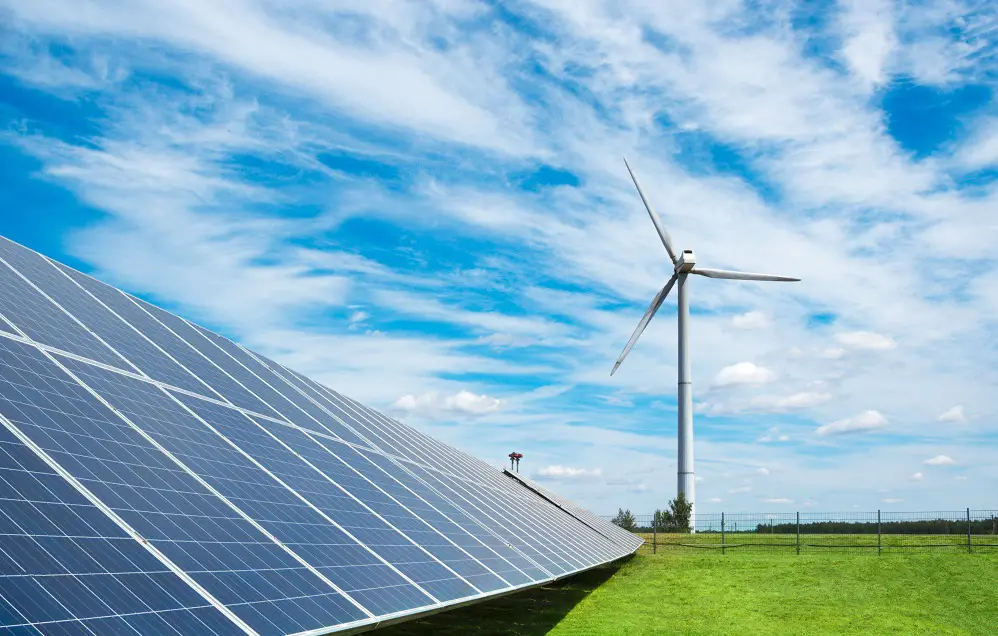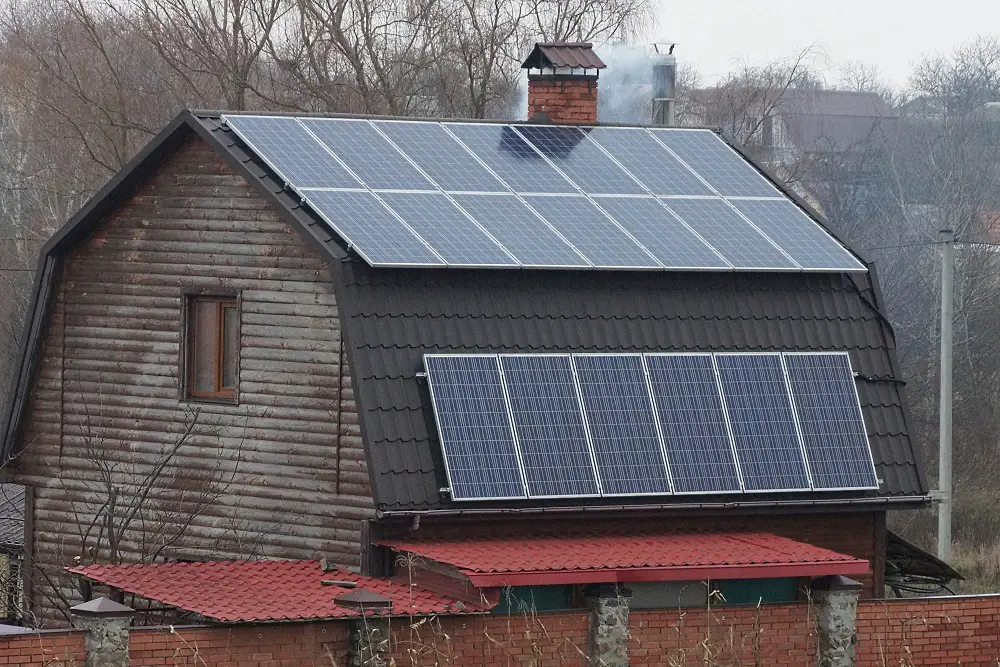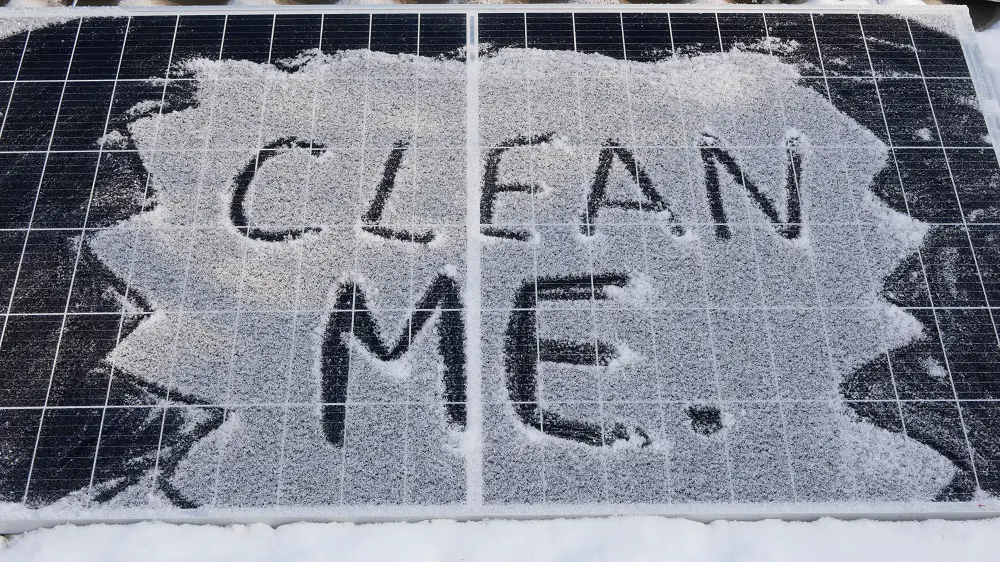According to the NOAA’s National Severe Storms Laboratory, small hailstones under 1 inch (the kind that are produced by the majority of “normal” hailstorms) fall at a speed of 9-25mph.1
However, severe thunderstorms are capable of producing hailstones from 1 inch to 1¾ inch in size, and these have an expected fall speed between 25 – 40 mph.
Only the very strongest supercell storms can produce the largest known hailstones (2 inches to 4 inches in diameter). The expected fall speed of these hailstones is between 44-72 mph.
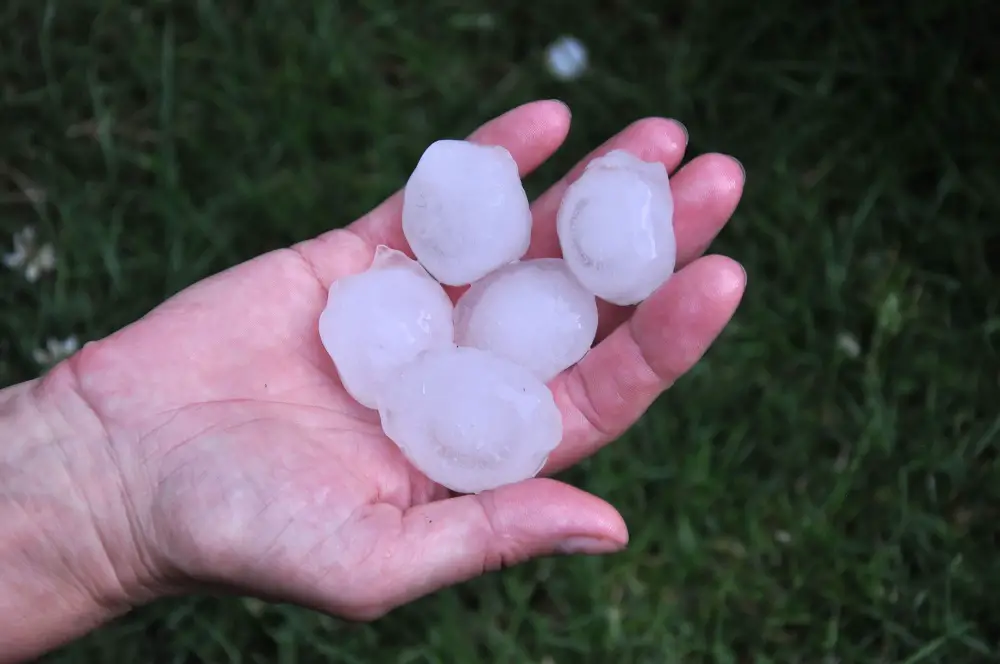
Standards for Solar Panel Toughness
All commercial solar panel designs are required to pass a resilience test called IEC 61215 before they are allowed to be put on sale.2 The IEC (International Electrotechnical Commission) have laid down minimum standards for hail stone impact resistance as follows:
A 25mm (1”) ice ball is fired at 23 meters per second (about 51 mph) at the solar panel in 11 different places. If the glass doesn’t break, and the power output of the panel doesn’t go down by more than 5%, and the panel still passes a wet leakage test, then the panel is deemed to have passed the hail resilience test.
The test firing speed exceeds the striking speed of hailstones from all “normal” hailstorms, and even severe thunderstorms. Only the rarest and most extreme storms are capable of producing hail stones that significantly exceed the test scenario.
So, ‘out of the box’, all solar panels will withstand the vast majority of hail storms without appreciable damage.
Real-world Example of a Severe Hail Storm
In May 2017, there was an unusually severe hail storm in the Denver, Colorado area. Hail stones shattered car windscreens and left golf ball sized dents on the roofs of local vehicles and homes.
Also struck by the storm was the NREL (National Renewable Energy Laboratory) main campus in Golden, Colorado. On and around their Research Support Facility building are over 3000 solar panels. Following the storm, these panels were inspected, and only 1 panel was found to have failed. 3
Steps that can be Taken to Mitigate Hail Damage Costs
There a few ways to mitigate the potential damage from hail. Namely, solar tracker rotation, enhanced surface protection for the the panels, and warranty considerations.
Solar Tracker Rotation
All utility scale solar installations use a device called a solar tracker. This is a system that allows a solar panel to be rotated such that it tracks the position of the sun as it moves across the sky. This increases the efficiency of the solar panel.
If a storm is detected, the rotation position of the trackers can be overridden to angle the panels at the steepest possible angle, such that any hail stone strikes are only glancing strikes against the panel, rather than a straight-on it. This drastically reduces the amount of impact strike power from the hail stones.
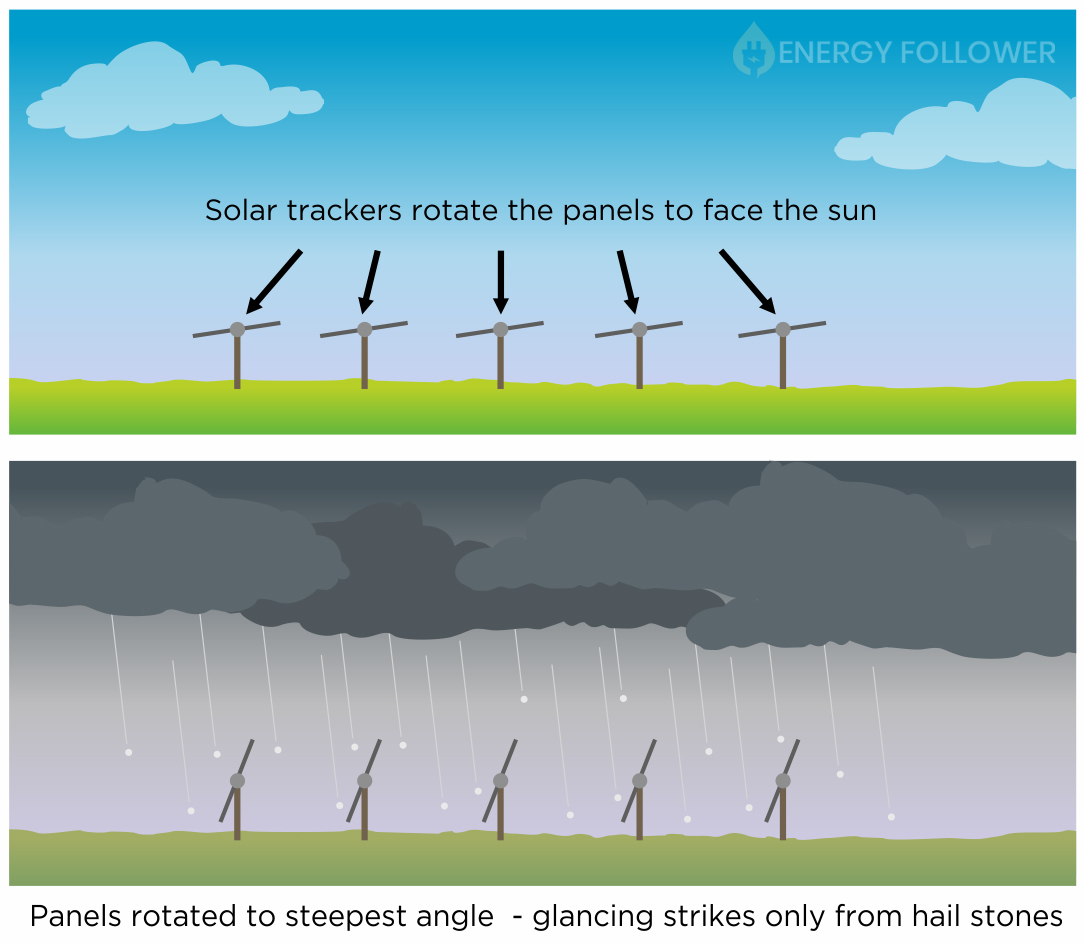
Note that this kind of mitigation is only possible for panels that are mounted on solar trackers.
Enhanced Surface Protection for Panels
Acrylate resins can be sprayed or adhesive PMMA (polymethyl methacrylate) films attached onto the surface of the panels for an additional layer of resistance to hail damage. But no methodical test data is available to determine how much improvement this gives.
Care needs to be taken to ensure that the particular coating used does not reduce the amount of sunlight that reaches the actual solar cells but again, there is no data readily available on this.
Warranty and Insurance Cover for Hail Damage to Solar Panels
It is standard practice for suppliers to specifically exclude hail damage from their solar panel warranties. Typical wording states that the warranty is void when “damage has been caused by extreme natural phenomena (earthquakes, typhoons and tornadoes, volcanic eruptions, flood and storm tides, lightning, hailstorms and heavy snowfalls, tsunami, etc.).”
Most domestic property insurers don’t view solar panels as an additional item – they’ll consider them to be part of the fabric of the house, just like the roof or walls. This means they should be fully covered by any standard buildings insurance policy – but it’s always best to double check with your insurance provider to make sure this is the case for yours.
Make sure you inform your buildings insurer if you are having solar panels added to your property. Most will include solar panels as standard, which means it shouldn’t cost any extra to cover them, but some policies may attract a small additional premium to include solar panels.
Note this is not the case for commercial, utility scale solar farms and installations. Specific insurance will need to be taken out in these cases, the cost of which will vary significantly depending on a number of factors – for example: the thickness and type of surface coating of the panels ; whether the panels are bi-facial modules (double sided to capture both direct and reflected light) ; the number of panels being installed ; where the panels are being installed etc.


